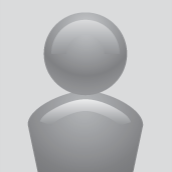My Videos
The Difference Between Wireless Screen Screencasting Along With Sharing
What is screen mirroring?
Display mirroring, also termed wireless display screen mirroring, can be a tech which enables you to endeavor, or"mirror" the current content on your smartphone, tablet tablet computer or tablet screen to another display or digital sign (no cables or adapters needed ). Display screen mirroring is really actually a means that is beneficial to demo software or to make use of an application, engage in videos for everybody to watch, or share with using the contents of the internet site or any document onto your own personal computer or mobile system. Visit our site for fruitful information about
tv buddy caster now.
Screen mirroring is actually just a means to share your screen. Display mirroring is not to be mistaken with screen-casting. Screencasting requires a program in order to mail out movie clips, pictures, and even music in tablet computer your own phone or tablet into another display. After screen-casting, you only will need to make use of your personal apparatus to"setup" articles (e.g. commencing a movie). Once it really is rolling , you can abandon your apparatus to the building and have the movie continue to play the Smart TV or projector. Display mirroring, on the opposite side, requires that you just pose are living and stay about. You are continually sending a backup of your entire display screen or one window which is duplicated onto the other display, when display screen mirroring.
Display screen Mirroring Systems
There are plenty of varieties of engineering expectations for monitor mirroring or wireless screen mirroring, each with their very own histories and pros and cons.
Miracast
Miracast is a widely available technologies for monitor mirroring. It's a effective and useful technology that lets users wirelessly share articles on a single screen to some other screen or even a projector. However, Miracast has a drawback. Therefore, it is perhaps not fit for circumstances that are bring-your-own-device.
MHL
Cell high definition url (MHL) enables people to mirror the content of their mobiles to your projector or screen, but demands a microusb interface to HDMI converter that can perform the move, making it problematic for shared and classrooms meeting rooms, because the necessary devices are often lost or broken. Not all of mobiles support MHL, which causes it to be hard for device scenarios that are bringyourown.
DLNA
Digital Living Network Alliance (DNLA) is arguably perhaps probably one among the most powerful standards for wireless monitor mirroring - so long as users often to have SONY devices (Sony Bravia, Sony PlayStation, Sony Xperia along with Sony VAIO). DLNA works with a lockable model, when host and the customer are attached that means, your client could access the documents within your machine. Due to the fact DLNA performs with users can't screen YouTube video clips or their browser window into the screen or projector.
ScreenSharing
Display sharing can be known as desktop-sharing. While mirroring and casting are done using a smaller device (e.g., cellphone or laptop) along with a bigger exhibit (e.g. wireless tv or projector), screen sharing typically entails making a copy of your screen to other monitors displays.
This is particularly useful once you would like to go through a slideshow or document with someone who is in a different site, like when supplying distant workout sessions on line.
There is a great number of screen-sharing solutions, such as for example those provided by GoToMeeting, Slack, Skype, etc.. Screen sharing is quite handy for peer cooperation (e.g., working in a design and style mockup ), however, it really is perhaps maybe not usually used for educational or professional demos.
Displays rather call for people to direct their attention to a person who's physically current and using just one (or 2 ) displays to show visual assistance which can be complementary into this concept of their speaker.
Sharing calls for most of participants looking in their own monitor, to follow together side the person who is communication out of the remote location. It will take place once a server pc (anyone sharing) sends data to your remote computer system (or multiple based on the range of individuals ) on the system. This info is encrypted, meaning it's changed to some code for security reasons.
The applications utilized for sharing just sends upgrades onto the segments of their screen that have changed. By only sending what's essential, bandwidth (the capacity of the wired or wireless system ) use is not reduced.


